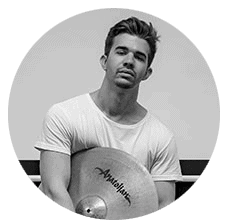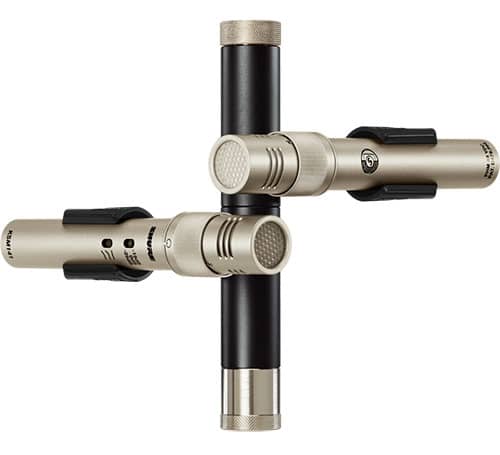What kind of microphones are used for overheads?
You typically use condenser microphones for overheads of a drum kit. Condenser mics have wider pickup patterns than dynamic mics do, meaning they get a fuller picture of what your drum kit sounds like.
Dynamic mics have a short pickup range, so they only pick up the sound from what they’re directly pointing at. If you were to use dynamic mics as overheads, you’d only end up hearing whatever they’re directed at. That’s why condensers are always the better option.
Dynamic mics, on the other hand, work excellently as close mics on all the drums. They give depth to whatever the condenser overhead mics aren’t picking up. They also allow more control over the drum tone when you’re working on the mix.
What are overhead mics used for?
Overhead mics are used to record the entirety of the drum kit. Their main job is to pick up all the cymbal sounds. However, they typically get in the sounds of the drums as well. Your overhead mics and your kick drum mic will always be the most important mics in a drum kit setup.
Once you have those setup, you can focus on the close dynamic mics. Some drum setups only use a 3-mic setup with two overheads and one kick mic. You’ll find this often is the case with jazz drummers in live settings.
It’s a bit different in studio settings. Studio drum kits will always have as many mics as possible in order to get the most full and clear sound picture of the drum set.
Are condenser mics good for overheads?
Condenser mics are your main option for overheads. If you use any other type of mic, you won’t get as good of a sound from the recording. The reason for this is that condensers are designed to pick up sound from wider sources than other types of mics. This makes them excellent at picking up all the sounds from a drum kit.
It’s not ideal to use dynamic mics as overheads as they won’t be able to pick up the vast range of sound sources that a drum kit has. So, condensers are your only option in most cases.
There are obviously exceptions to this, but it’s not recommended to use dynamic mics as overheads.


